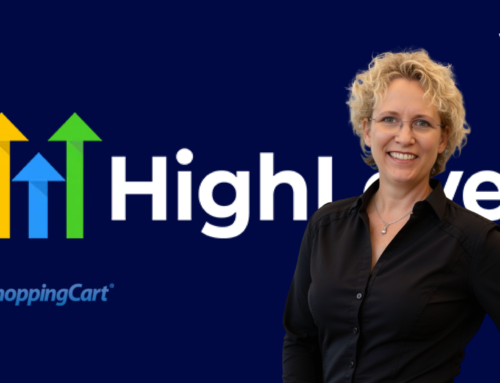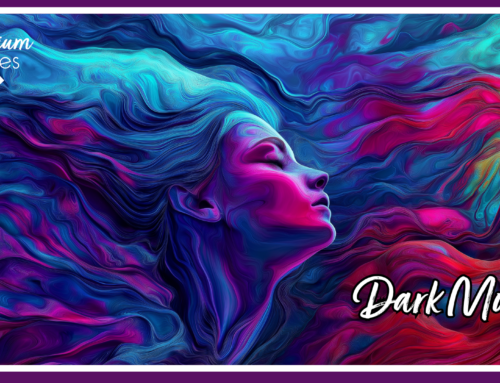
Why Authentic Storytelling Isn’t Optional Anymore
You’re not alone when you’re tired of ads that feel like wallpaper. Audiences crave something real. They want stories that show who you are, not just what you sell. Premium Websites, Inc. knows this better than most. They’ve built their reputation on helping brands connect through genuine, purpose-led narratives. This guide explores how to craft messaging that sticks, inspires, and earns trust by being real.
Trust Replaces Attention as the Most Valuable Currency
People aren’t short on content. They’re short on patience. Polished ads, pristine packaging, and keyword-heavy campaigns get tuned out like elevator music. What stops the scroll? Truth. Raw, relatable moments. A staggering 94% of consumers say they’d leave a brand that feels fake. That number isn’t just data—it’s direction.
Trust is no longer a warm, fuzzy feeling—it’s the foundation of decision-making. Customers notice when a company owns up to delays, recalls, or rethinks. And they remember. Take the time your supplier bailed last-minute, or the product design flopped. Those aren’t just internal setbacks; they’re stories showing your audience how to adapt under pressure.
The irony?
Imperfection makes you more believable. In a world addicted to filters, the brave win by showing the blemishes.
Differentiate with Human Detail and Authentic Storytelling
Great marketing doesn’t just describe—it remembers. Not all brand stories need to start in a garage, but they should feel like they could have: the team pizza night where the idea clicked, the first awkward pitch in front of skeptical investors, or the time your founder handmade packaging on her living room floor.
That’s the texture people crave. They don’t want to hear you’re “innovative.” They want to see how your CTO still uses her college laptop because she believes in getting more from less. These are the layers of identity that can’t be duplicated.
Premium Websites, Inc. urges brands to catalog these micro-moments. They’re more than memories. They’re your unfair advantage. While competitors chase trends, you build a connection through truth.
Stories Convert Better
Feelings guide fingers. If your story stirs emotion, it drives motion—clicks, sign-ups, shares. The Harvard Business Review found that emotionally connected customers are more than twice as valuable as satisfied ones. And it starts with resonance.
When a single parent talks about how your app saved them ten hours a week, people care. When your co-founder explains the moment he almost quit—but didn’t—that becomes a turning point your audience won’t forget.
Narrative doesn’t just boost conversions; it lifts brand recall. Viewers remember a story-driven ad 22 times more than a fact-based one. Add emotion to your message, and you don’t just win attention. You earn belief.
4 Elements of Authentic Storytelling That Works
1. Purpose With Clarity
People don’t wake up excited to support a mission statement that sounds like it came from a committee. They want something clear. Something bold. Something that moves them.
Don’t say, “We aim to make a difference.” Say, “We help first-time founders get their first sale.” Don’t claim to be “eco-conscious.” Show how you removed plastic from your supply chain, even when it cost more.
Your purpose doesn’t have to be grand. It just has to be real. Maybe it’s about making healthcare less confusing. Or helping artists make a living. Premium Websites, Inc. works with founders to strip away buzzwords and find the heartbeat behind the business.
A good purpose makes decisions easier. A great one makes people care.
2. Real Voices, Not Stock Photos
Nothing kills authenticity faster than stiff headshots and rehearsed quotes. Your audience knows the difference between a paid model and your actual customer service lead who built your FAQ page by hand.
Let your people speak—unfiltered and unpolished. Film your founder explaining a bad product decision and what they learned. Share team inside jokes on Instagram. Post a blooper reel from your office photoshoot.
These are the moments that build trust. Vulnerability isn’t weakness—it’s credibility. The more human you are, the more relatable you become. And that’s what earns loyalty.
3. Let Your Community Speak
Your story doesn’t end with you—it starts with your customers. They’re the ones putting your product to the test in real life. And they’re often better storytellers than you are.
Invite customers to share their first unboxing moment. Turn employee milestones into Instagram takeovers. Repost TikToks from fans showing how they use your product creatively.
The best campaigns don’t feature actors. They feature ambassadors: the grandmother using your tool to run her side hustle, the student who fixed their laptop with your DIY kit. Those stories stick. Let them lead.
And when they talk, don’t edit too much. Raw content hits harder. So step back and let the people speak.
4. Stay Consistent, Not Boring
Being consistent doesn’t mean being repetitive. It means keeping your voice, tone, and truth aligned—whether it’s a podcast or a product label.
If your brand sounds warm and cheeky on social but cold and robotic in emails, something’s off. Authenticity lives in alignment. People should recognize you no matter where they find you—on YouTube, on your website, or in a chatbot.
Premium Websites, Inc. helps brands create story guidelines that travel well. They’re not scripts—they’re personality blueprints. These help your team create across platforms while staying unmistakably “you.”
Mix up the medium. One week, it’s a founder Q&A on Instagram Live. The next is a customer success story in a newsletter. Then, a podcast where your CTO interviews users. The message stays the same, but the format keeps it fresh.
Steps to Build Your Brand’s Authentic Story
Find Your Real “Why”
Start with a room—not a boardroom. No agenda, no buzzwords. Just gather your team and talk. Ask questions that spark feelings: What keeps us up at night? What do we wish someone had built for us ten years ago? What part of our work still gives us goosebumps?
Record the conversation. You’ll find gold in the tangents and laughter.
Your “why” isn’t about industry domination—it’s about impact. Maybe it’s helping artisans earn a living wage. Maybe it’s making budgeting less terrifying for freelancers. Whatever it is, distill it into one sentence that makes people nod in agreement—or tear up a little.
That sentence becomes your brand’s backbone.
Outline Your Brand Milestones
Great stories need arcs. So, map out your timeline like a documentary script, including not just your founding date and first sale but also the hiccups, heartbreaks, and happy accidents.
What was the first big break? When did something almost fail? Where did you pivot because a customer surprised you?
Use those moments as narrative anchors. A story about nearly going bankrupt but saving the company by listening to feedback builds more credibility than a chart showing “year-over-year growth.”
Include the scrappy moments. Like the time you drove six hours to deliver a product in person. Or slept under your desk to hit a launch deadline. These aren’t just anecdotes—they’re the soul of your story.
Feature Real People
Your brand isn’t your logo. It’s the people behind it. So shine a light on them.
Start with your founder, but go beyond. Share the story of the intern who became your lead designer. The factory worker who sings to boost morale. The customer who’s been with you since version one.
Write mini-profiles. Use real names, candid photos, and details that make them feel like old friends. Don’t strip away the weird quirks—they make the story believable.
And feature customers who’ve helped shape your journey. Tell their stories with as much heart as your own.
Create Multi-Format Content
Don’t lock your story in a blog post. Give it legs.
- Articles: Long reads about your origin, mission, projects, or customer journeys.
- Video: Founder talks, warehouse walkthroughs, user unboxings, team lunchroom conversations.
- Social: Quotes, GIFs, snippets from user reviews, “a day in the life” of your staff.
Test out unexpected formats. Could your CEO narrate a short audio series about starting up? Could your support team do a behind-the-scenes TikTok? Try, fail, iterate.
Premium Websites, Inc. helps brands choose formats that fit their voice—not just chase trends.
Build Community Engagement
It’s not engagement if it’s a monologue. Start a dialogue.
Ask your audience about their first experience with your product. Invite them to share photos of how they use it in their daily lives. Create hashtags with emotional weight—ones that feel like inside jokes or shared values.
Feature fans. Credit creators. Reshare their wins.
And when you reply to comments or messages, don’t hide behind brand-speak. Be warm. Be specific. Use names. Ask questions back.
These moments don’t scale, but they stick.
Next Moves for Your Marketing and Authentic Storytelling
Audit Everything
Start with a red pen and a ruthless mindset. Go through your website, social feeds, and email campaigns. If anything sounds like it came from a corporate template, cut it. If a page starts with “We’re passionate about delivering solutions”—rewrite it. That’s wallpaper.
Replace generic phrases with true moments. Instead of “industry leader,” say “bootstrapped our way into 1,000 stores without outside funding.” Instead of “customer-centric,” describe how your support team sent hand-written notes to angry reviewers.
Use a simple test: Would you say this out loud to a friend? If not, rework it until it feels conversational.
Plan a Story-First Content Calendar
Your calendar should do more than check marketing boxes—it should build emotional rhythm.
Pick monthly themes with character:
- January: “New Year, Real You” – Highlight behind-the-scenes goal-setting.
- March: “Makers & Mistakes” – Share product bloopers or early designs.
- June: “Customer-First Summer” – Showcase user-created stories.
Then rotate formats:
- Week 1: Written post
- Week 2: Short video
- Week 3: Live event or podcast
- Week 4: UGC spotlight or reel
Keep the structure flexible, but the tone consistent. Stories that reflect real life don’t go stale.
Empower Team and Fans
Your people are your greatest content engine. They just need the spark.
Create weekly internal prompts:
- “What was the best customer question you got this week?”
- “What made you laugh in the breakroom?”
- “What’s one lesson you learned on the job this month?”
Turn answers into quotes, reels, or team spotlights. Feature the people behind your brand with the same energy you use for product launches.
For your community, turn engagement into a ritual. Shout out to the top commenters. Share tagged posts in Stories. Start “fan of the month” emails. Turn passive followers into outspoken brand defenders.
Did you know? One of the most viral brand stories ever was about a broken product. Blendtec’s “Will It Blend?” campaign started as an internal joke and became a global hit—all because they filmed real engineers doing real things with ridiculous honesty. That’s the power of not taking yourself too seriously.
People don’t just buy what you sell. They buy who you are. Premium Websites, Inc. helps brands lean into their purpose, share their hearts, and connect with customers on a real level. Authentic storytelling is the path to trust, loyalty, and long-term success. Make it part of your brand’s DNA.



